How is Body SAR Measured?
Body SAR is measured using a Specific Anthropomorphic Mannequin (SAM) phantom, which is a model of the human body that is filled with liquids that simulate the RF absorption characteristics of different human tissues. The SAM phantom is designed to represent the body of an average adult male, and it has specific dimensions for the size and shape of the body, as well as the thickness and composition of the skin, fat, muscle, and other tissues.
| SAR Rank | Phone Model | Body SAR | % Legal Limit |
|---|---|---|---|
1st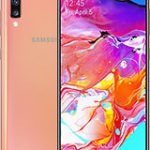 | Samsung Galaxy A70 | 0.25 W/kg | 15.63% |
2nd | Samsung Galaxy A50 | 0.45 W/kg | 28.13% |
3rd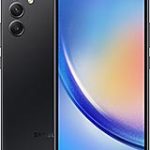 | Samsung Galaxy A24 4G | 0.49 W/kg | 30.63% |
Tied 3rd | SAMSUNG GALAXY A52 | 0.49 W/kg | 30.63% |
4th | Samsung Galaxy A14 | 0.52 W/kg | 32.5% |
Tied 4th | SAMSUNG GALAXY A73 | 0.52 W/kg | 32.5% |
5th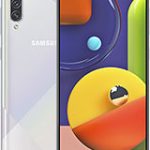 | Samsung Galaxy A50S | 0.56 W/kg | 35% |
6th | Samsung Galaxy A23 5G | 0.57 W/kg | 35.63% |
7th | Samsung Galaxy A13 | 0.58 W/kg | 36.25% |
8th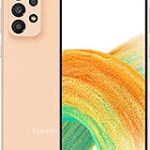 | Samsung Galaxy A33 5G | 0.62 W/kg | 38.75% |
| SAR Rank | Phone Model | Body SAR | % Legal Limit |
Tied 8th | Samsung Galaxy S24 Ultra | 0.62 W/kg | 38.75% |
9th | Samsung Galaxy M54 | 0.65 W/kg | 40.63% |
10th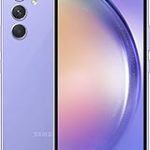 | Samsung Galaxy A54 5G | 0.67 W/kg | 41.88% |
11th | SAMSUNG GALAXY A72 | 0.68 W/kg | 42.5% |
12th | SAMSUNG GALAXY A22 | 0.70 W/kg | 43.75% |
Tied 12th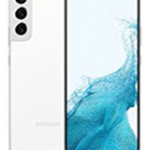 | Samsung Galaxy S23 | 0.70 W/kg | 43.75% |
| 13th | Google Pixel 2 | 0.74 W/kg | 46.25% |
14th | Samsung Galaxy A34 | 0.76 W/kg | 47.5% |
| 15th | Google Pixel 2 XL | 0.77 W/kg | 48.13% |
Tied 15th | Samsung Galaxy Z Flip4 | 0.77 W/kg | 48.13% |
| SAR Rank | Phone Model | Body SAR | % Legal Limit |
Tied 15th | SAMSUNG GALAXY A22 5G | 0.77 W/kg | 48.13% |
16th | Samsung Galaxy A23 4G | 0.78 W/kg | 48.75% |
17th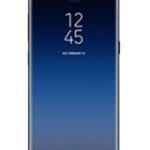 | Samsung Galaxy S9 Plus | 0.79 W/kg | 49.38% |
18th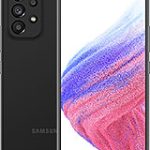 | SAMSUNG GALAXY A53 5G | 0.80 W/kg | 50% |
Tied 18th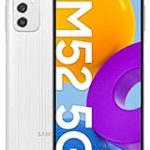 | SAMSUNG GALAXY M52 5G | 0.80 W/kg | 50% |
19th | Samsung Galaxy S20 FE | 0.82 W/kg | 51.25% |
20th | Samsung Galaxy S21 FE | 0.90 W/kg | 56.25% |
| 21st | GOOGLE PIXEL 7 PRO | 0.91 W/kg | 56.88% |
22nd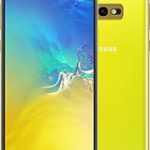 | Samsung Galaxy S10e | 0.92 W/kg | 57.5% |
23rd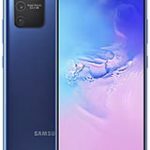 | Samsung Galaxy S10 Lite | 0.93 W/kg | 58.13% |
| SAR Rank | Phone Model | Body SAR | % Legal Limit |
| 24th | Google Pixel 7a | 0.95 W/kg | 59.38% |
Tied 24th | Samsung Galaxy S20 Plus | 0.95 W/kg | 59.38% |
Tied 24th![samsung-galaxy-s21-plus-5g-[1]](https://www.rfsafe.com/wp-content/uploads/2020/12/samsung-galaxy-s21-plus-5g-1-66x66.jpg) | Samsung Galaxy S21 PLUS | 0.95 W/kg | 59.38% |
25th | Samsung Galaxy S9 | 0.96 W/kg | 60% |
26th | Samsung Galaxy S8 Plus | 0.97 W/kg | 60.63% |
27th | Samsung Galaxy S22 Ultra | 0.98 W/kg | 61.25% |
28th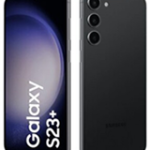 | Samsung Galaxy S23 Plus | 1.01 W/kg | 63.13% |
29th | Samsung Galaxy S21 Ultra | 1.02 W/kg | 63.75% |
30th | Samsung Galaxy S20 | 1.03 W/kg | 64.38% |
31st | SAMSUNG GALAXY A51 5G | 1.04 W/kg | 65% |
| SAR Rank | Phone Model | Body SAR | % Legal Limit |
32nd | Apple iPhone 14 Pro Max | 1.07 W/kg | 66.88% |
33rd | Samsung Galaxy Z Flip3 | 1.08 W/kg | 67.5% |
Tied 33rd | Samsung Galaxy S21 | 1.08 W/kg | 67.5% |
Tied 33rd![samsung-galaxy-s22-plus-5g[1]](https://www.rfsafe.com/wp-content/uploads/2021/12/samsung-galaxy-s22-plus-5g1-66x66.jpg) | Samsung Galaxy S22 Plus | 1.08 W/kg | 67.5% |
Tied 33rd | Apple iPhone 8 | 1.08 W/kg | 67.5% |
Tied 33rd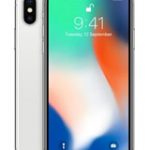 | Apple iPhone X | 1.08 W/kg | 67.5% |
| 34th | Google Pixel 5A 5G | 1.09 W/kg | 68.13% |
Tied 34th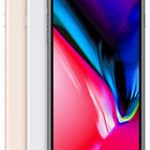 | Apple iPhone 8 Plus | 1.09 W/kg | 68.13% |
Tied 34th | Apple iPhone 12 Mini | 1.09 W/kg | 68.13% |
Tied 34th | Apple iPhone 15 | 1.09 W/kg | 68.13% |
| SAR Rank | Phone Model | Body SAR | % Legal Limit |
35th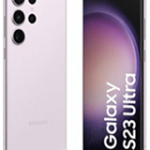 | Samsung Galaxy S23 Ultra | 1.10 W/kg | 68.75% |
Tied 35th | Apple iPhone 7 Plus | 1.10 W/kg | 68.75% |
36th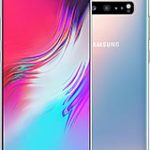 | Samsung Galaxy S10 5G | 1.11 W/kg | 69.38% |
Tied 36th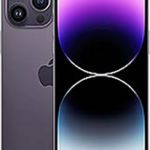 | Apple iPhone 15 Pro Max | 1.11 W/kg | 69.38% |
37th | Apple iPhone 15 Plus | 1.12 W/kg | 70% |
38th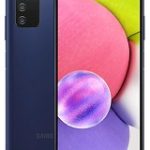 | Samsung Galaxy A03s | 1.13 W/kg | 70.63% |
39th | Apple iPhone 6s Plus | 1.14 W/kg | 71.25% |
Tied 39th | Samsung Galaxy S24 | 1.14 W/kg | 71.25% |
Tied 39th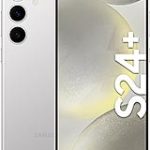 | Samsung Galaxy S24 Plus | 1.14 W/kg | 71.25% |
Tied 39th | Apple iPhone SE | 1.14 W/kg | 71.25% |
| SAR Rank | Phone Model | Body SAR | % Legal Limit |
Tied 39th | Apple iPhone 7 | 1.14 W/kg | 71.25% |
Tied 39th | Apple iPhone 11 | 1.14 W/kg | 71.25% |
Tied 39th![apple-iphone-13-mini[1]](https://www.rfsafe.com/wp-content/uploads/2020/12/apple-iphone-13-mini1-66x66.jpg) | Apple iPhone 13 Mini | 1.14 W/kg | 71.25% |
40th | Samsung Galaxy S22 | 1.15 W/kg | 71.88% |
Tied 40th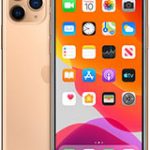 | Apple iPhone 11 Pro | 1.15 W/kg | 71.88% |
Tied 40th | Apple iPhone 14 PLUS | 1.15 W/kg | 71.88% |
Tied 40th | Apple iPhone 14 Pro | 1.15 W/kg | 71.88% |
| 41st | Google Pixel 6A | 1.16 W/kg | 72.5% |
Tied 41st | Apple iPhone 14 | 1.16 W/kg | 72.5% |
Tied 41st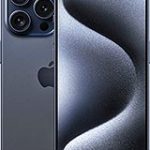 | Apple iPhone 15 Pro | 1.16 W/kg | 72.5% |
| SAR Rank | Phone Model | Body SAR | % Legal Limit |
42nd | SAMSUNG GALAXY A32 5G | 1.17 W/kg | 73.13% |
Tied 42nd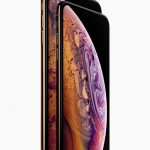 | Apple iPhone XS MAX | 1.17 W/kg | 73.13% |
Tied 42nd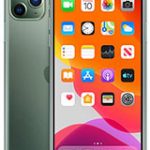 | Apple iPhone 11 Pro Max | 1.17 W/kg | 73.13% |
Tied 42nd | Apple iPhone 12 Pro | 1.17 W/kg | 73.13% |
Tied 42nd![apple-iphone-13[1]](https://www.rfsafe.com/wp-content/uploads/2020/12/apple-iphone-131-66x66.jpg) | Apple iPhone 13 | 1.17 W/kg | 73.13% |
| 43rd | Google Pixel 5 | 1.18 W/kg | 73.75% |
Tied 43rd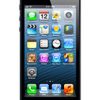 | Apple iPhone 5 | 1.18 W/kg | 73.75% |
Tied 43rd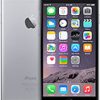 | Apple iPhone 6 | 1.18 W/kg | 73.75% |
Tied 43rd | Apple iPhone Xs | 1.18 W/kg | 73.75% |
| 44th | GOOGLE PIXEL 6 PRO | 1.19 W/kg | 74.38% |
| SAR Rank | Phone Model | Body SAR | % Legal Limit |
Tied 44th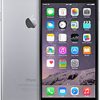 | Apple iPhone 6 Plus | 1.19 W/kg | 74.38% |
Tied 44th | Apple iPhone 12 | 1.19 W/kg | 74.38% |
Tied 44th | Apple iPhone 12 Pro Max | 1.19 W/kg | 74.38% |
Tied 44th![apple-iphone-13-pro[1]](https://www.rfsafe.com/wp-content/uploads/2020/12/apple-iphone-13-pro1-66x66.jpg) | Apple iPhone 13 Pro | 1.19 W/kg | 74.38% |
Tied 44th | Apple iPhone 13 Pro Max | 1.19 W/kg | 74.38% |
Tied 44th | Apple iPhone SE 3 (2022) | 1.19 W/kg | 74.38% |
45th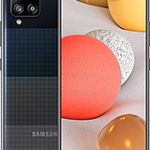 | SAMSUNG GALAXY A42 5G | 1.25 W/kg | 78.13% |
46th | Samsung Galaxy A12 | 1.35 W/kg | 84.38% |
47th | SAMSUNG GALAXY A14 5G | 1.36 W/kg | 85% |
During the SAR measurement, the wireless device is placed in a specific position on the SAM phantom, and a radio frequency (RF) signal is sent to the device at its highest power level. The SAR value is then measured in a specific location on the SAM phantom, such as the head, chest, or limbs.
What is Body SAR?
Body SAR is a measure of the amount of RF energy absorbed by the body’s tissues when using a wireless device, such as a cell phone, tablet, or laptop. The SAR value is measured in watts per kilogram (W/kg) and is based on the amount of RF energy absorbed by the body per unit of mass.
What are the Safe SAR Limits?
The safe SAR limits for the body are set by regulatory agencies, such as the Federal Communications Commission (FCC) in the United States. It just lost a lawsuit, proving the FCC has neglected its duty to protect the public by maintaining outdated safety guidelines. The current limit for whole-body SAR exposure in the United States is 1.6 W/kg averaging over 1 gram of tissue. This means that the amount of RF energy absorbed by the body must be below this limit to ensure safety. This also assumes you will keep the phone at least 5-15 mm away from your body!
Introduction
As wireless technology becomes more prevalent in our daily lives, concerns about potential health risks from exposure to radiofrequency (RF) radiation have arisen. One way to measure the potential effects of RF radiation on the human body is to measure the Specific Absorption Rate (SAR), which is the rate at which RF energy is absorbed by the body’s tissues. In this article, we will focus specifically on body SAR, which measures the amount of RF energy absorbed by the body when using a wireless device. We will explore the testing protocol and safety guidelines related to body SAR and discuss potential health risks associated with high levels of RF exposure.
What are the Potential Health Risks of High SAR Exposure?
High levels of RF exposure from wireless devices have been associated with potential health risks, such as an increased risk of cancer, neurological disorders, and reproductive problems. However, the evidence for these risks is still inconclusive, and more research is needed to fully understand the potential health effects of RF exposure.
How Can You Reduce Your Exposure to RF Radiation?
To reduce your exposure to RF radiation, you can take simple steps, such as:
- Use a hands-free device, such as a wired or wireless headset or speakerphone, to keep the wireless device away from your body.
- Keep the wireless device away from your body, such as by placing it on a table or using a protective case that does not have metal components.
- Use the device in areas with strong wireless signal strength, as the device will emit less RF radiation to maintain a connection.
- Limit your use of wireless devices, such as by taking breaks or using them only when necessary.
FAQs
Q1: Is SAR testing required for all wireless devices? A1: Yes, SAR testing is required for all wireless devices that are intended to be used in close proximity to the body, such as cell phones, tablets, and laptops.
Q2: Are there any specific guidelines for children’s use of wireless devices? A2: Children are more vulnerable to potential health risks from RF exposure, and some regulatory agencies, such as the FCC, have specific guidelines for children’s use of wireless devices. For example, the FCC recommends limiting the amount of time children spend on their devices and using hands-free options to reduce RF exposure to the head.
Q3: Can using a cell phone cause cancer?
A3: The scientific community is still divided on the potential link between cell phone use and cancer. Some studies have suggested a possible link, while others have found no association. The World Health Organization classifies RF radiation as a possible carcinogen, but more research is needed to fully understand any potential health risks.
Q4: Can using a headset or speakerphone reduce exposure to RF radiation?
A4: Yes, using a hands-free option such as a headset or speakerphone can reduce RF exposure to the head. When using a headset, it is important to ensure that the cord is not damaged, as this can increase RF exposure.
Shortcomings of Body SAR
Despite the advantages of SAR testing for measuring the amount of RF energy absorbed by the human body, there are some limitations and shortcomings to the testing method.
One of the major limitations of body SAR testing is that it only measures the amount of RF energy absorbed by the tissue in the immediate proximity of the wireless device. This means that it does not take into account the effects of long-term exposure to RF energy over extended periods of time, such as months or years. While SAR testing can provide a good indication of the potential health risks associated with short-term exposure, it may not be sufficient for assessing the long-term effects of RF energy on the body.
Another limitation of body SAR testing is that it only measures the amount of RF energy absorbed by the tissue in the body, and does not take into account the potential effects of RF energy on other parts of the body, such as the eyes or reproductive organs. While the SAR limit is set to ensure that the amount of RF energy absorbed by the body is within safe limits, there is still some debate about the potential health risks associated with exposure to RF energy over time.
Additionally, SAR testing is typically done using a phantom model that is designed to represent the average human body, and may not take into account the variability in the size, shape, and composition of different individuals. As a result, the SAR measurement may not be accurate for all individuals, particularly for those who have different body types or who use wireless devices in different ways.
Finally, SAR testing does not take into account the potential cumulative effects of exposure to RF energy from multiple wireless devices over time. While the SAR limit is set to ensure that the amount of RF energy absorbed by the body is within safe limits, it may not take into account the potential effects of exposure to multiple devices over a period of years.
Despite these limitations, SAR testing remains a valuable tool for assessing the potential health risks associated with short-term exposure to RF energy from wireless devices. By following simple steps to reduce exposure, such as using a hands-free device or reducing the amount of time spent on the phone, you can protect yourself from potential health risks associated with RF energy.
Body SAR Controversy
The controversy surrounding body SAR testing largely revolves around the debate over the safety of RF exposure and the adequacy of current safety standards. While regulatory agencies such as the FCC and the International Commission on Non-Ionizing Radiation Protection (ICNIRP) have set safety limits for RF exposure, some researchers and advocacy groups argue that these limits are too lenient and do not adequately protect the public from potential health risks.
There have been studies suggesting a link between long-term cell phone use and certain types of cancer, including brain cancer and acoustic neuroma. However, the evidence is inconclusive, and many of these studies have been criticized for their methodology and limitations.
In addition, some experts have raised concerns about the potential health risks of 5G technology, which uses higher frequencies and shorter wavelengths than previous wireless technologies. While 5G is not currently a major concern for SAR testing, as it is primarily used for data transmission and not voice calls, its potential long-term health effects are still under investigation.
Overall, the controversy surrounding body SAR testing highlights the need for continued research and refinement of safety standards in the face of rapidly evolving wireless technologies. While the evidence of potential health risks from RF exposure is still inconclusive, it is important for individuals to be aware of the potential risks and take steps to minimize their exposure.
